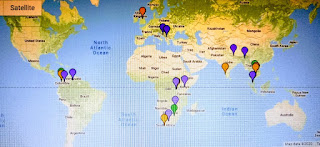Dance If You Cannot Afford The Gym!
Create space at home for conducting healing dances
There is a power that the drum, rhythm and pattern draw into one watching a dancing performance.
You will agree with me that dance moves can emotionally move one to upliftment, joy, laughter, awe, inspiration and admiration. That is the beauty of dance.
Create spaces for members at your household to participate in dancing even as they watch others move in delicate and sometimes very complicated dance moves.
Some moves require deep breathing, moving of arms, twisting one’s hips and breaking a bone here or there as it were.
Dance can make one gain their physical strength and mental clarity.
Dance is transformative and healing opportunity.
There are some people who consider dancing as a cure for much of what ails us. It may not be the answer to every health crisis, but there's no doubt that it has its benefits to the body and mind in many ways.
Some of the physical effects of dance are that it improves bonding, team-work and a liking of common things by people who are living in same communities.
Dance boosts cardiovascular health and bone strength given the fact that it is weight-bearing exercise.
Dance improves balance and flexibility. A study published in The New England Journal of Medicine investigated the effect leisure activities had on quality life especially among sedentary people like the elderly.
Researchers found that frequent dancing was the only physical activity that appeared to lower the participants’ risk of dementia considerably in the elderly. The lead author of the study, Joe Verghese, a professor of Neurology at Albert Einstein College of Medicine, surmised that, "unlike many other physical activities, dancing also involves significant mental effort and social interactions." Both intellectual and social stimulation have been shown to reduce the risk of getting dementia.
Dance increases one’s use of joints and limbs. People become more mobile can move about faster and even run after the cat chasing the chicken!
Dance as a curative exercise isn't a new phenomenon. The dance therapy movement was born decades ago when Marian Chace first introduced dance to psychiatric patients at St. Elizabeth’s Hospital in Washington, DC in the 1940's.
She taught a class called "Dance for Communication" to World War II vets, offering them a way to convey feelings that – especially for psychologically traumatized patients — can be difficult to verbalize. Chace eventually helped found the American Dance Therapy Association in 1966. Dance/movement therapy focuses on dancing's psychological benefits and its ability to encourage emotional connections. Today, dance is used in treatments for everything from eating disorders, autism, depression and lethargy.
Dance provides opportunities for the body/mind connection, and dance is a way for people to use what's happening inside them and express it in an external, expansive way. Dance has the same benefits as those gained from talk therapy. In talk therapy, patients use discussion to explore feelings and alleviate psychological discomfort or pain. But in addition to using words, dance therapists “help people develop a physical vocabulary” to do much the same thing.
Dance can be used as a way of connecting ourselves to our bodies in elemental ways, which leads to improved body alignment, enhanced mood, boosted confidence, and many more physical- and mental-health benefits.
Continued dance sessions provide opportunities for muscle activity. Beneficiaries find they are less fatigued, have much more strength and acquire a positive attitude to life.




Comments
Post a Comment